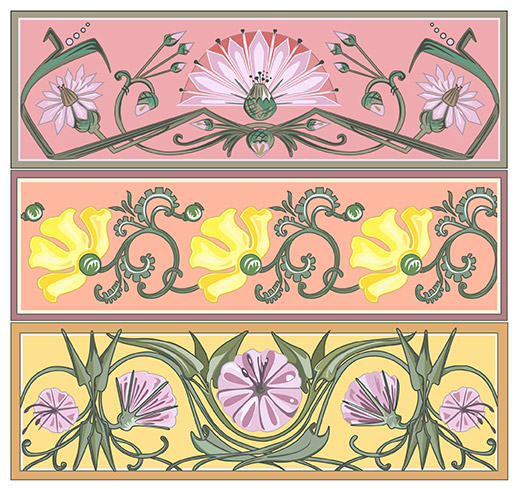 When a young Rudolf Laban began his art studies in 1899, Art Nouveau, with its emphasis on stylization of natural forms, was in fashion everywhere in Europe. Consequently, Laban came-of-age as an artist by learning to see and create visual patterns, such as the designs shown here.
When a young Rudolf Laban began his art studies in 1899, Art Nouveau, with its emphasis on stylization of natural forms, was in fashion everywhere in Europe. Consequently, Laban came-of-age as an artist by learning to see and create visual patterns, such as the designs shown here.
When Laban’s interests turned to dance, he was already sensitive to the use of symmetry in visual design. And the dances of the period were rich with symmetries – from the corps de ballet and the chorus line to circle dances and festive folk processions.
The various symmetry operations – reflection, rotation, translation, and glide reflection – fascinated Laban.
Find out how these operations for creating patterns became powerful tools in Laban’s later movement research in the upcoming workshop, “His Hand and Head: How Laban Created Movement Patterns.”
